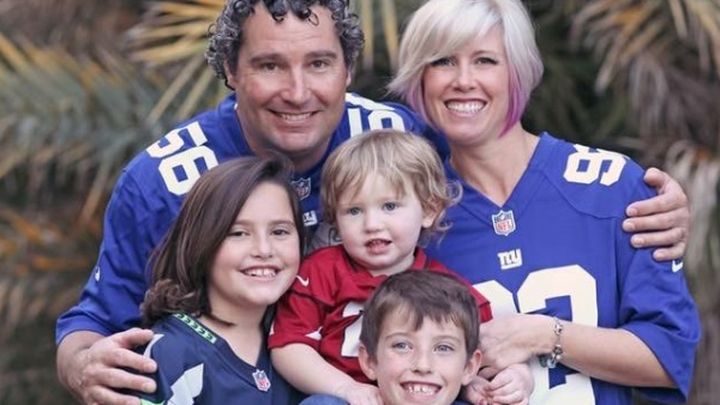
Lambertson ALS Relief Fund
Donation protected
Last summer thousands of people, participated in the very popular ALS Ice Bucket Challenge. I was also one of those participants, not knowing that one year later, it would affect me personally. On August 12, 2015, a very special person in my life was diagnosed with Amyotrophic Lateral Sclerosis, also known as ALS. Christopher Lambertson, my brother, is the father of 3 young children, Lily, Zephyr and Zion, and the husband to his beautiful wife, Keely Lambertson. Since being diagnosed, the family is now experiencing a flood of medical bills not covered by their insurance agency. In order to help alleviate their debt, we are collecting monetary donations. We will also host a tribute WOD at CFSA on Saturday, September 26th @9am. Any and all contributions are greatly appreciated.
Christen
ALS Facts:
•ALS is not contagious.
•Although the life expectancy of a person with ALS averages about two to five years from the time of diagnosis, this disease is variable, and many people can live with the disease for five years and more. More than half of all people with ALS live more than three years after diagnosis.
•Once ALS starts it almost always progresses, eventually taking away the ability to walk, dress, write, speak, swallow, and breathe and shortening the life span. How fast and in what order this occurs is very different from person to person. While the average survival time is 3 years, about twenty percent of people with ALS live five years, 10 percent will survive ten years and five percent will live 20 years or more.
•Progression is not always a straight line in an individual either. It is not uncommon to have periods lasting weeks to months where there is very little or no loss of function. There are even very rare examples in which there is significant improvement and recovery of lost function. These ALS "arrests" and "reversals" are unfortunately usually transient. Less than 1% of patients with ALS will have significant improvement in function lasting 12 months or more.
•Approximately 6,400 people in the U.S. are diagnosed with ALS each year. The incidence of ALS is two per 100,000 people, and it is estimated that more than 20,000 Americans may be living with ALS at any given time.
•ALS occurs throughout the world with no racial, ethnic or socioeconomic boundaries and can affect anyone.
•Military veterans are approximately twice as likely to develop ALS.
The onset of ALS often involves muscle weakness or stiffness as early symptoms. Progression of weakness, wasting and paralysis of the muscles of the limbs and trunk as well as those that control vital functions such as speech, swallowing and later breathing generally follows.
Christen
ALS Facts:
•ALS is not contagious.
•Although the life expectancy of a person with ALS averages about two to five years from the time of diagnosis, this disease is variable, and many people can live with the disease for five years and more. More than half of all people with ALS live more than three years after diagnosis.
•Once ALS starts it almost always progresses, eventually taking away the ability to walk, dress, write, speak, swallow, and breathe and shortening the life span. How fast and in what order this occurs is very different from person to person. While the average survival time is 3 years, about twenty percent of people with ALS live five years, 10 percent will survive ten years and five percent will live 20 years or more.
•Progression is not always a straight line in an individual either. It is not uncommon to have periods lasting weeks to months where there is very little or no loss of function. There are even very rare examples in which there is significant improvement and recovery of lost function. These ALS "arrests" and "reversals" are unfortunately usually transient. Less than 1% of patients with ALS will have significant improvement in function lasting 12 months or more.
•Approximately 6,400 people in the U.S. are diagnosed with ALS each year. The incidence of ALS is two per 100,000 people, and it is estimated that more than 20,000 Americans may be living with ALS at any given time.
•ALS occurs throughout the world with no racial, ethnic or socioeconomic boundaries and can affect anyone.
•Military veterans are approximately twice as likely to develop ALS.
The onset of ALS often involves muscle weakness or stiffness as early symptoms. Progression of weakness, wasting and paralysis of the muscles of the limbs and trunk as well as those that control vital functions such as speech, swallowing and later breathing generally follows.
Organizer and beneficiary
Christen Georgules
Organizer
Briar Park, DE
Keely Lambertson
Beneficiary